Vallarta Race: Fastest to the Cape…ever
Published on February 21st, 2016
The 32nd running of the Vallarta Race, a 1000nm course from San Diego, USA to Puerto Vallarta, Mexico, began with staggered starts on February 19 and 20 for the 21-boat field. Here’s an update on February 21…
With everyone recognizing that HL Enloe’s ORMA 60 trimaran Mighty Merloe (MM) is fast, it is no surprise that MM was going to ZOOM down the course. But it is still so impressive to track them as they work their way through a fleet that started 24 hours before them, and they are still 160 miles from Cabo at 1700 PST.
Their first 24 hours put them 480 nm down the course with an average VMG of 23 kts. That’s haulin’ the mail. So 28 hours after starting, they have caught overall frontrunner Viggo Torbensen’s Class 3 J/125 Timeshaver. Go Merloe… and happy B-Day to MM crew Will Suto. What a way to celebrate!
And speaking of February 19 starter Timeshaver, this little piece of optimism was included in their 0600 report this morning “Maybe (our) fastest run to the Cape… ever…”. Never letting up on the pressure with a 12 knot average for the last 24 hours, the YB Tracker shows early Sunday morning, they ducked the R/P50 Blue Blazes’ stern and took a seven hour hitch out to sea, then gybed. Blazes appeared to be doing the same on the opposite gybe. When they came back together around 1600 PST, Timeshaver had the edge by approximately 10 miles. As the sun goes down Sunday evening, they are both pointing southeast again doing 12 knots and playing hard to catch for the big sleds.
Meanwhile, in the big sled class (Div 1 and 2) gybe time was a little after sunrise Sunday morning as most boats began the gradual left turn and some solid running right down the Baja peninsula rhumbline for the day. At the end of their day today, they are beginning to gybe back out to sea as they closed to within 25 miles of Bahia Asuncion.
Aszhou (R/P63) added to their 0600 report today “Nice bright moonlight all night…” and the 17 knot average (for last 24 hours) down the course means they are enjoying the legendary west coast ride to the southland that this and other Mexican races are known for.
But reality looms in the grib files. This from Lucky Duck (SC52) in their 0600 report today “…Enjoying the wind while it lasts, each lull makes you wonder…” At the skippers meetings, Peter Isler showed various grib file forecasts, and they generally agreed that Monday would be a new day as a ridge of high pressure will move in and break up the party!
Going forward, it is worth mentioning how to really drill down on the boat’s performance. YB Tracking has worked hard to build a user interface that can give a great perspective and some wonderful data. Besides the regular interactive map display and leaderboard that slides out from the left side, you can also access a different leaderboard layout here: http://yb.tl/Leaderboard/sdpv16. You can select the fleet you want to study at the top from a drop down menu, and switch between “VMG from the start” which is the boat’s average speed over the whole course, or “Recent VMG” for just the last 24 hrs.
Race website – Entry list – Tracking – Twitter
Report by SDYC.
Background: The 32nd running of the Vallarta Race hosts 21 teams competing on the 1000nm course from San Diego, USA to Puerto Vallarta, Mexico. The biennial event in 2016 has staggered starts with Division 3 and 4 starting February 19 with Division 0, 1, and 2 starting February 20.
The fleet consists of six boats from Southern California while other boats hail from San Francisco Bay, Hawaii, Texas, Chicago, Mexico, and Peru.
The multihull race record of 02:08:33 was set in 2014 by Tom Siebel’s MOD70 trimaran Orion. The monohull race record of 03:08:52 was set in 2010 by Bill Turpin’s R/P 77 Akela.
Upon arrival in Puerto Vallarta, seven of the boats are planning to compete the following week on Banderas Bay in the MEXORC regatta on February 28 to March 5.


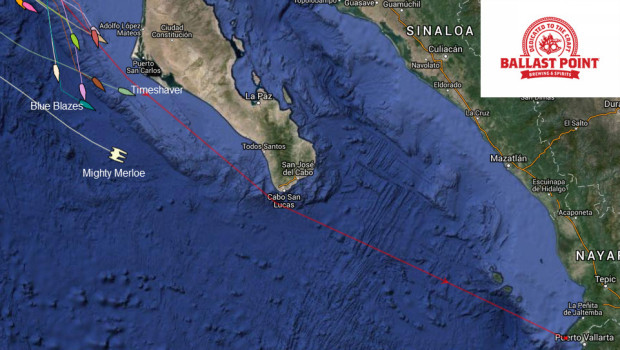


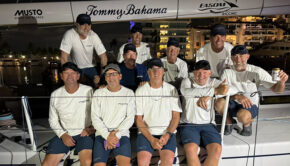
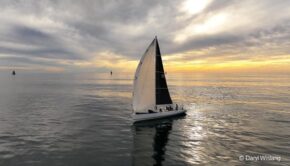
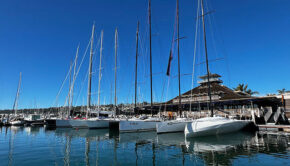
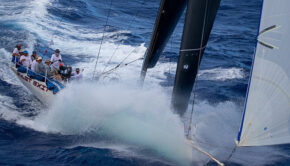
 We’ll keep your information safe.
We’ll keep your information safe.